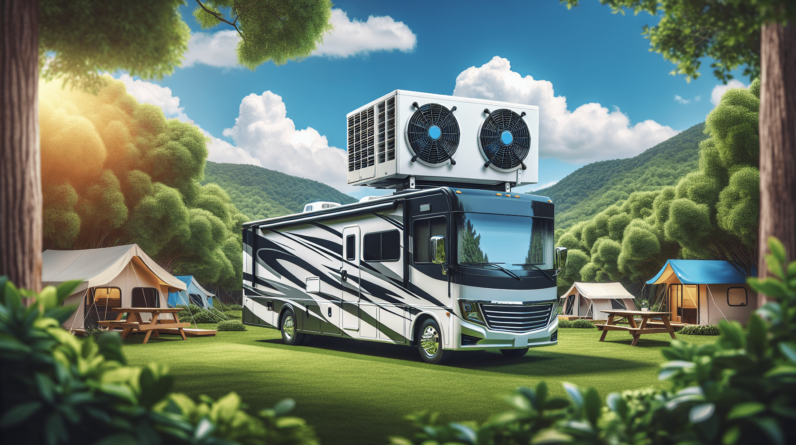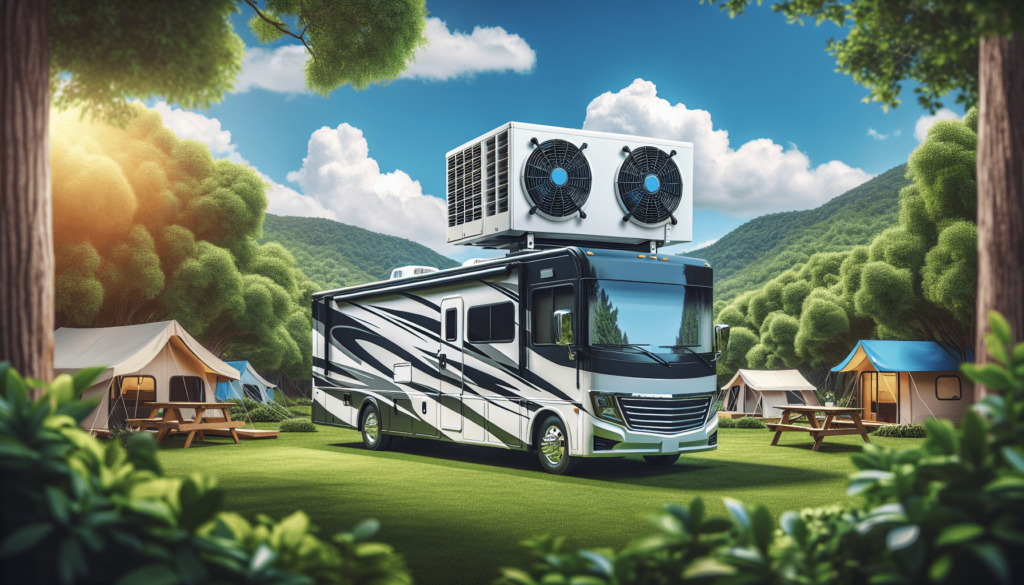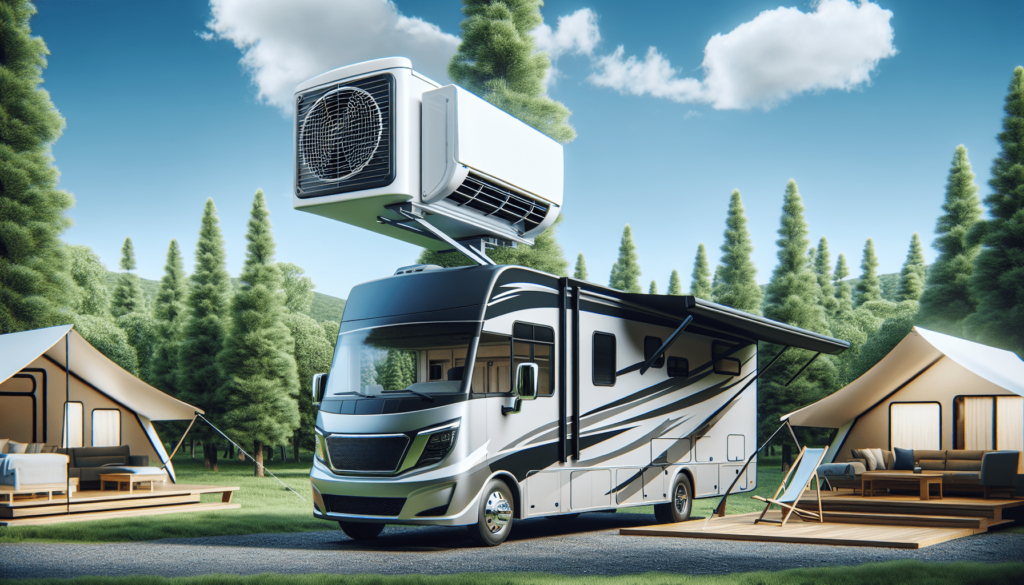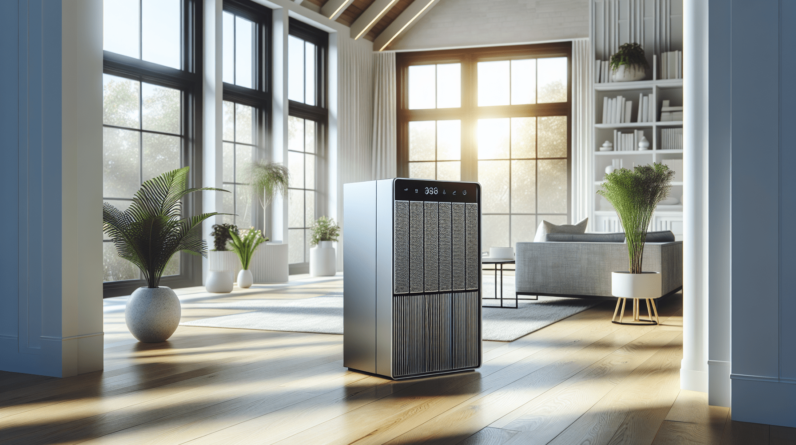

Have you ever found yourself sweating in your RV during the peak of summer? It’s in those sweltering moments that a good RV air conditioner unit can make all the difference. Keeping cool while on the road or parked at a campsite is essential for enjoying your trip, and understanding your options for air conditioning can enhance your overall experience.

Understanding RV Air Conditioner Units
When it comes to RV air conditioners, you’ve got a variety of options available, catering to different needs, types of RVs, and climates. Knowing how these units work and how to choose the right one for your rig can significantly impact your comfort.
Types of RV Air Conditioner Units
Air conditioning units for RVs generally fall into two categories: rooftop units and portable units. Here’s a closer look at each type to help you determine which might work best for you.
Rooftop Units
Rooftop air conditioners are the most common type found in RVs. They are installed on the roof and usually come with a designated vent to circulate cool air throughout the living space.
| Feature | Description |
|---|---|
| Installation | Permanently mounted on the roof of the RV |
| Cooling Capacity | Typically ranges from 13,500 to 15,000 BTUs |
| Power Source | Runs on electricity, requires a 30 or 50 amp service |
| Weight | Usually between 75 to 150 pounds |
Rooftop air conditioning units are designed to be durable and withstand the rigors of travel.
Portable Units
Portable air conditioners offer flexibility and can be moved as necessary. They perform well in smaller spaces or as supplemental cooling in larger RVs.
| Feature | Description |
|---|---|
| Portability | Easily movable, can be set up where cooling is needed |
| Cooling Capacity | Generally lower, around 8,000 to 14,000 BTUs |
| Power Source | Can often be used with standard 100-volt outlets |
| Drainage | Requires water evacuation or a drainage system |
If you need something less permanent, portable units might just be the answer for you.
Benefits of Having an RV Air Conditioner
Wondering why investing in an RV air conditioner is worth it? Here are a few reasons it can be a game-changer for your adventures.
Comfort in Hot Weather
First of all, comfort is key, especially during hot summer months. Having air conditioning means you can relax inside your RV and escape the heat, which is crucial for maintaining a pleasant atmosphere.
Extended Camping Season
An RV with a reliable air conditioner allows you to camp comfortably during the hotter months, extending your camping season significantly. High temperatures shouldn’t put a damper on your travel plans!
Enhanced Sleep Quality
Cool air can drastically improve your quality of sleep. If you’ve ever tried to sleep in a sweltering RV, you know that comfort is essential for restful nights on the road.
Selecting the Right RV Air Conditioner
Choosing the right air conditioning unit for your RV involves several factors. Let’s walk through some of the most crucial considerations to help you make an informed choice.
Size and BTU Rating
The size of the air conditioner matters, and it’s often measured in BTUs (British Thermal Units). The higher the BTU rating, the more cooling power the unit has. Selecting the right BTU based on your RV’s size can make all the difference in effectiveness.
| RV Size (Length) | Recommended BTUs |
|---|---|
| Under 20 feet | 5,000 – 7,000 BTU |
| 20 – 25 feet | 8,000 – 10,000 BTU |
| 25 – 30 feet | 10,000 – 13,500 BTU |
| Over 30 feet | 13,500+ BTU |
Keep in mind that factors like insulation, window size, and even the number of occupants can influence your BTU needs.
Power Source Compatibility
An essential aspect to consider is the power source. Ensure that your RV’s electrical system can support the air conditioning unit you plan to install. Most rooftop units require a dedicated circuit, so check your RV’s electrical rating before making a purchase.
Noise Level
Noise can be a significant concern with air conditioners. Rooftop units tend to be quieter compared to portable ones. If you value peace and quiet, pay attention to the noise ratings (measured in decibels) of potential air conditioners.
Energy Efficiency
Energy-efficient air conditioners consume less electricity, which is particularly important when you’re off-grid or camping without hookups. Look for units with a high EER (Energy Efficiency Ratio) to save on energy costs.
Installing an RV Air Conditioner
If you’re handy, you might be considering installing the air conditioning unit yourself. Here’s a quick guide to installing a rooftop AC unit for those up for the challenge.

Tools You’ll Need
Before getting started, make sure you have the right tools on hand.
- Screwdriver
- Ladder
- Sealant (if required)
- Electrical tool kit
Step-by-Step Installation
-
Choose the Right Spot: Mark the spot on the roof where the air conditioner will be installed. Make sure it’s close to an existing power source.
-
Cut the Roof Opening: If this is your first air conditioning unit, you’ll need to cut an opening in the roof. Carefully follow the manufacturer’s instructions for size and placement.
-
Secure the Unit: Place the air conditioner into the opening and secure it according to the manufacturer’s guidelines. Ensure it’s tightly sealed to prevent leaks.
-
Connect the Wiring: Follow standard electrical safety precautions. Connect the unit to the RV’s electrical system, double-checking your work to ensure there are no loose connections.
-
Test It Out: Once installed, start the air conditioner to ensure it’s working properly. Check for any unusual noises or leaks around the seals.
Professional Installation
If you’d rather not tackle the installation yourself, consider hiring a professional. While it may incur some costs, having experts handle the installation can give you peace of mind.
Maintenance Tips for Your RV Air Conditioner
To keep your RV air conditioner running smoothly, regular maintenance is essential. Here are some tips to help you stay on top of it.
Cleaning the Filter
Most units come with a removable air filter that traps dust and debris. Check the filter regularly and clean or replace it as needed. A clogged filter can restrict airflow and reduce efficiency.
Inspecting the Coils
The evaporator and condenser coils are critical for cooling performance. Make sure to inspect them routinely and clean them to maintain optimal efficiency.
Check for Leaks
Regularly inspect the unit for any signs of refrigerant leaks. If you notice ice buildup or unusual noises, it may be a sign that there’s an issue that needs prompt attention.
Schedule Professional Maintenance
If you’re unsure about performing maintenance tasks yourself, consider scheduling annual inspections with a professional. They can ensure everything is functioning at peak performance and can catch potential issues before they become significant problems.

Troubleshooting Common RV Air Conditioner Issues
Despite your best efforts at maintenance, problems can arise. Here are some common issues you might encounter and how to troubleshoot them.
Air Conditioner Not Cooling
If your air conditioner isn’t cooling properly, start by checking the thermostat settings. Make sure the unit is set to “cool,” and verify that the temperature settings are correct. Check the filter as well; if it’s dirty, that can prevent adequate airflow.
Strange Noises
If you hear grinding, clicking, or other unusual noises, it may be time to check the unit’s components. Loose parts, failing bearings, or debris can all contribute to strange sounds. Turn off the unit and inspect it carefully.
Ice Buildup
Ice can accumulate on the evaporator coils, disrupting airflow and cooling. This may be due to low refrigerant levels, a clogged filter, or an issue with the thermostat. Turn off the unit and allow it to defrost.
Electrical Issues
If your unit won’t turn on, first check the power source. Verify that your RV is connected to a power supply and that circuit breakers haven’t tripped. If everything appears correct but it still won’t work, you may need to consult a professional.
Common RV Air Conditioner Brands
With so many options on the market, choosing the right brand matters. Here are some reliable brands known for their quality RV air conditioning units:
Dometic
Dometic is one of the leading brands in RV air conditioning. They offer a variety of rooftop and portable units that are known for their durability and performance.
Coleman-Mach
Coleman-Mach is another reputable manufacturer, recognized for their efficient rooftop AC units, which are popular among RV owners for their reliability and ease of installation.
Advent
Advent provides various air conditioning products that are budget-friendly without skimping on quality. Their units are known for being lightweight and energy-efficient.
Atwood
Atwood specializes in innovative heating and cooling solutions for RVs, making them a solid choice if you’re looking for performance and efficiency.
Cost Considerations for RV Air Conditioners
Before making a final decision, it’s important to consider the costs involved.
Purchase Price
The price of RV air conditioners can vary widely based on type, brand, and features. Rooftop units typically range from $600 to $1,500, while portable units can cost anywhere from $200 to $1,000.
Installation Cost
If you’re opting for professional installation, factor that into your budget as well. It can range from $150 to $500 depending on the complexity of the installation and your location.
Operating Costs
Don’t forget about the long-term energy costs. A more energy-efficient air conditioner can help you save on monthly utility bills, especially if you plan to camp for extended periods.
Maintenance Costs
You might need to budget for occasional repairs and maintenance as well to keep your unit in good working order.
Achieving the Best Cooling Efficiency
Maximizing the efficiency of your RV air conditioner is crucial for enjoying a comfortable trip. Here are some strategies to enhance cooling efficiency.
Use Reflective Window Covers
Blocking sunlight from entering your RV can help maintain a cooler interior. Reflective window covers or shades can reduce heat buildup and make your air conditioner’s job easier.
Ensure Proper Ventilation
Proper ventilation is key. Make sure that your RV windows and vents are correctly adjusted for airflow and to maintain a good indoor climate.
Limit Heat Sources
Minimize the use of heat-producing appliances, particularly during the hottest parts of the day. This can positively impact the performance of your air conditioning unit.
Routine Maintenance
Staying on top of maintenance tasks will keep your unit running efficiently. Regularly cleaning filters, coils, and checking for leaks can extend the lifespan of your air conditioner.
Conclusion
Staying cool in your RV during the summer months can greatly enhance your travel experience. By understanding your options, selecting the right unit, performing regular maintenance, and being aware of troubleshooting techniques, you can enjoy the great outdoors without the discomfort of the heat. Investing in quality air conditioning is more than just a luxury—it’s about ensuring your camping trips are both enjoyable and comfortable. Happy camping!






